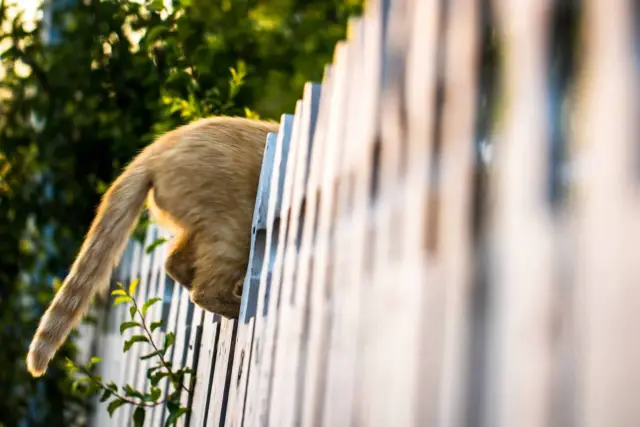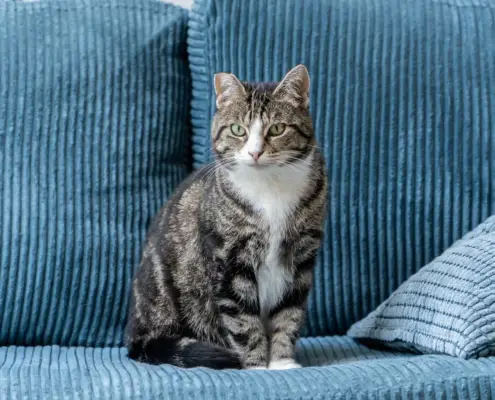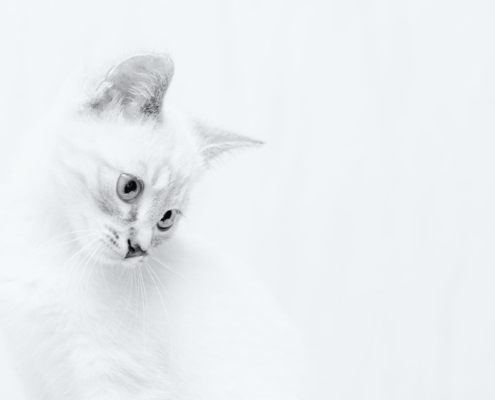
Cats are fascinating creatures that have their own unique ways of communicating with humans and other animals. Understanding their communication signals is crucial for building a strong bond with your feline companion. Cats use a combination of body language, vocalizations, and scent marking to express their emotions and needs. By learning to decipher their messages, you can better understand why cats exhibit certain behaviors, including the perplexing act of sticking their butts in our faces.
The different ways cats communicate
Cats have a diverse range of communication methods, each serving a specific purpose. Body language plays a significant role in their communication repertoire. When a cat is feeling relaxed and content, they may exhibit behaviors such as rubbing against your legs, purring, or kneading with their paws. These actions are a way for them to mark you with their scent, showing affection and ownership.
Vocalizations are another important form of communication for cats. They use different types of meows, chirps, and growls to convey various messages. For instance, a short, high-pitched meow may indicate a greeting or a request for attention, while a deep growl can be a sign of aggression or fear. Understanding the context and tone of their vocalizations can help you respond appropriately.
Why do cats stick their butts in our faces?
One peculiar behavior that many cat owners have experienced is when their feline friends decide to stick their butts in their faces. While this may seem odd to us humans, it actually has a logical explanation rooted in feline biology and social behavior. Cats have scent glands located on their cheeks, chin, and anal area, which produce pheromones – chemical signals that transmit information to other cats.
By presenting their rear end to you, cats are essentially sharing their unique scent with you. It’s their way of marking you as part of their territory and showing trust and familiarity. This behavior is more commonly observed in cats that have a close bond with their owners or other feline companions. So, when your cat sticks their butt in your face, take it as a sign of affection and acceptance.
The science behind the behavior
To delve deeper into the science behind this behavior, it is important to understand the role of pheromones in cat communication. Cats have scent glands located in their anal area, which release pheromones when they rub against objects or individuals. These pheromones contain information about the cat’s identity, reproductive status, and emotional state.
When a cat sticks its butt in your face, it is essentially sharing its unique scent with you. By doing so, the cat is strengthening the bond between you and marking you as part of its territory. The pheromones released from the anal glands provide a sense of familiarity and comfort for the cat. This behavior is particularly common in cats that have a strong attachment to their owners or other feline companions.
What does it mean when a cat sticks its butt in your face?
If your cat has ever stuck its butt in your face, you may be wondering what exactly it means. As mentioned earlier, this behavior is a way for cats to mark you with their scent and show trust and familiarity. It is a sign that your cat considers you part of its social group and feels comfortable around you.
Additionally, when a cat presents its rear end to you, it is also an invitation for social bonding. Cats have special scent receptors called the vomeronasal organ, located in the roof of their mouths. By sniffing the pheromones released from the anal area, cats can gather valuable information about the individuals they encounter, including emotional states and reproductive status.
How to prevent or redirect the behavior
While some cat owners may not mind their feline companions sticking their butts in their faces, others may find it uncomfortable or unhygienic. If you fall into the latter category, there are several ways to prevent or redirect this behavior.
One effective method is to redirect your cat’s attention to an alternative behavior. For example, when you notice your cat approaching your face with its rear end, gently guide it towards a scratching post or a favorite toy. By engaging your cat in a more appropriate activity, you can discourage the butt-sticking behavior without causing any distress.
Another approach is to provide your cat with designated areas where they can engage in scent marking. This can be achieved by placing scratching posts or horizontal surfaces, such as cat shelves or mats, in various locations around your home. By encouraging your cat to mark these areas instead, you can redirect their natural instinct to scent mark away from your face.
Other peculiar cat behaviors explained
In addition to the butt-sticking behavior, cats exhibit a plethora of other peculiar behaviors that can leave their owners scratching their heads. One such behavior is the kneading or “making biscuits” motion that cats perform with their paws. This behavior is a remnant of their kittenhood when they would knead their mother’s mammary glands to stimulate milk flow. Kneading is a sign of comfort and contentment, often accompanied by purring.
Another common behavior is “head bunting,” where cats gently bump their heads against objects or individuals. This behavior is a way for cats to mark their territory and show affection. When a cat head bunts you, it is a sign of trust and acceptance, as they are transferring their scent onto you.
Tips for strengthening the bond with your cat
Understanding and interpreting your cat’s unique behaviors is an essential part of strengthening the bond between you and your feline companion. Here are some tips to help you build a stronger connection with your cat:
- Spend quality time together: Set aside dedicated time each day to engage in interactive play sessions or simply spend time in the same room, allowing your cat to approach you at their own pace.
- Respect their personal space: Cats are independent creatures and appreciate having their own space. Give them the freedom to explore and retreat to their favorite spots without interruption.
- Provide environmental enrichment: Cats thrive in stimulating environments. Offer a variety of toys, scratching posts, and perches to keep them mentally and physically engaged.
- Use positive reinforcement: Reward your cat with treats, praise, or gentle petting when they exhibit desirable behaviors. This positive reinforcement encourages them to repeat those behaviors.
- Avoid punishment: Cats do not respond well to punishment. Instead, focus on redirecting unwanted behaviors and providing appropriate alternatives.
Seeking professional help for behavioral issues
If you are experiencing persistent behavioral issues with your cat, it may be beneficial to seek professional help. A veterinarian or a certified animal behaviorist can provide expert guidance and develop a tailored behavior modification plan for your cat. They can help identify any underlying medical conditions that may be contributing to the behavior or recommend specific techniques to address the issue.
Remember, every cat is unique, and what works for one may not work for another. Patience, understanding, and a proactive approach are key when dealing with behavioral challenges.
Conclusion
Decoding cat communication is a fascinating journey that allows us to better understand and connect with our feline friends. The behavior of cats sticking their butts in our faces may seem peculiar, but it is rooted in their instinct to mark us with their scent and establish a sense of familiarity and trust. By learning to interpret their body language, vocalizations, and scent marking, we can deepen our bond with our cats and provide them with the care and attention they need. So, the next time your cat presents its rear end to you, embrace it as a quirky display of love and acceptance.
If you enjoyed my article, I would appreciate you sharing it with your network.

Sima Ndlebe
Sima writes for CatBuzz. He is interested in Cats, Health and Fitness, and Entrepreneurship.
Published: 19 May 2024




